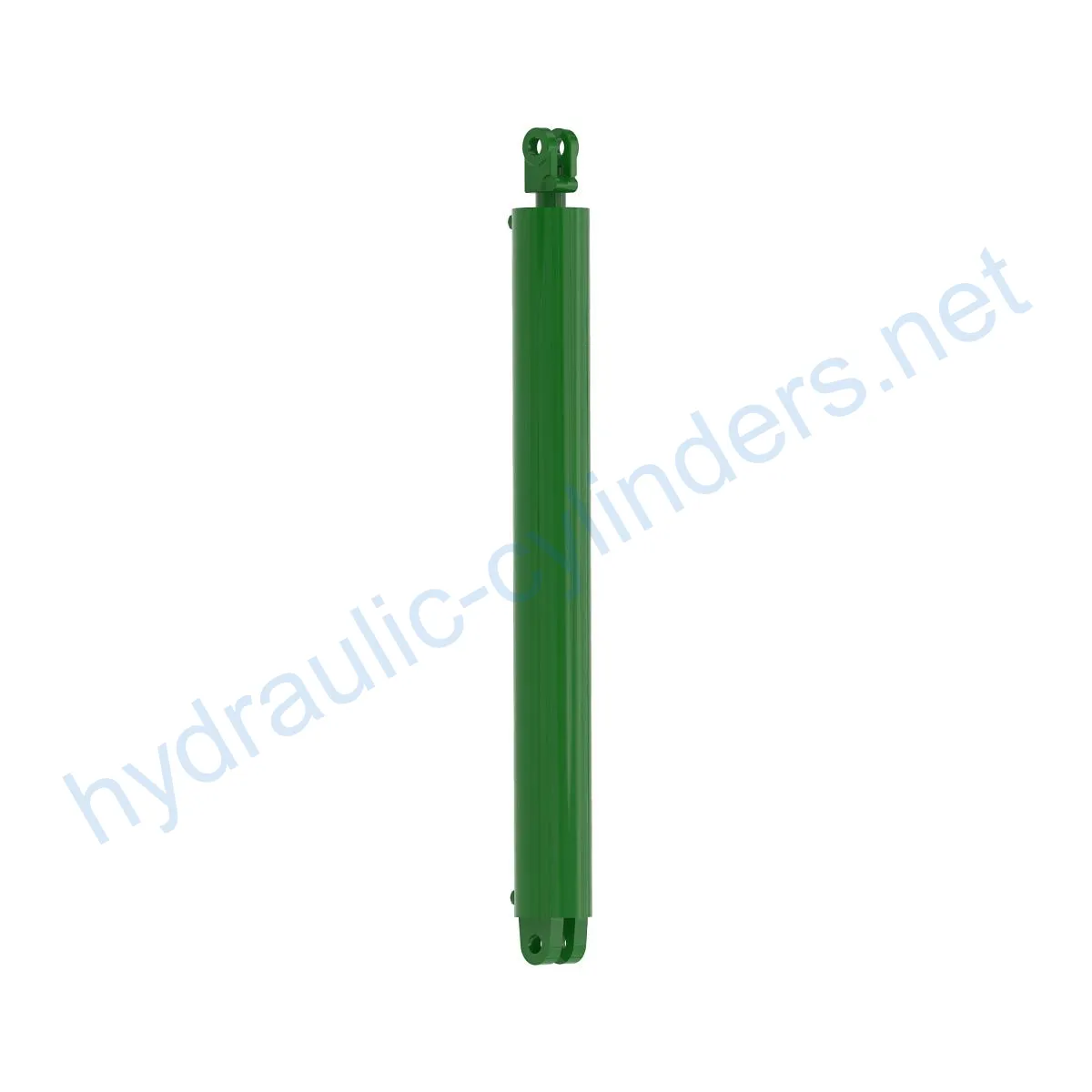Replacement Of AHC15347 Hydraulic Cylinder
Som en av produsentene, leverandørene og eksportørene av mekaniske produkter tilbyr vi hydrauliske sylindere og mange andre produkter.
Ta kontakt med oss for mer informasjon.
Post:sales@hydraulic-cylinders.net
Produsent, leverandør og eksportør av hydrauliske sylindere.
Replacement Of AHC15347 Hydraulic Cylinder
Firstly, let’s introduce the product and define what this hydraulic cylinder is and its purpose. A hydraulic cylinder is a mechanical actuator that is used to provide unidirectional force through a unidirectional stroke. It converts the energy of fluid pressure into linear motion and force, allowing for the operation of various machinery and equipment.
Specifications
- Weight: 143.3 lb
- Height: 5.8 in
- Width: 6 in
- Length: 56 in
Model
The hydraulic cylinder model for this product is 2230FH.
Features
- Improved Equipment Performance: Replacing damaged or worn hydraulic cylinders can restore the normal operation capability of equipment, ensuring its performance in various applications.
- Enhanced Safety: Regularly replacing hydraulic cylinders can reduce safety hazards caused by cylinder failures, ensuring the safety of operators and equipment.
- Overload Protection: New cylinder designs often incorporate better overload protection mechanisms, improving safety.
- Quick Installation: Modern hydraulic cylinders are designed for easy installation and replacement, minimizing downtime.
- Standardized Components: Many hydraulic cylinders are standardized products, making it easier to obtain replacement parts in the market.
We can produce this product and our cylinders are a perfect replacement for the ones mentioned above.
Applications
- Excavators: Hydraulic cylinders on excavator arms or buckets may get damaged due to prolonged use or overload, requiring replacement to restore normal operation.
- Cranes: Hydraulic cylinders on crane boom are prone to wear during frequent lifting and lowering processes, requiring regular replacement to ensure safety.
- Tractors: Hydraulic cylinders on front-end loaders of tractors may experience leakage or performance degradation during constant lifting and tilting operations, necessitating replacement.
- Harvesters: Hydraulic cylinders in harvesters’ hydraulic systems endure high pressures during the harvesting process and may get damaged due to fatigue, requiring timely replacement to maintain efficiency.
- Automated Production Lines: Hydraulic cylinders are used to control robotic arms and other automated equipment. Cylinder failures can significantly impact production efficiency, necessitating immediate replacement.
- Die-Casting Machines: Under high pressure and high-temperature environments, hydraulic cylinders may experience decreased performance. Regular replacement ensures product quality.
- Mining Equipment: Hydraulic cylinders are used for lifting and moving heavy loads in mining equipment. Due to harsh working conditions, regular inspection and replacement are necessary to avoid equipment failures.
- Bulldozers: Hydraulic cylinder wear on bulldozer blade arms can lead to decreased pushing capability, requiring timely replacement to maintain operational efficiency.
Maintenance Tasks
- Regular Inspections: It is important to periodically inspect hydraulic cylinders for any signs of wear, leakage, or damage.
- Proper Lubrication: Adequate lubrication is essential to ensure smooth operation and extend the lifespan of hydraulic cylinders.
- Seal Replacement: If seals show signs of wear or leakage, they should be promptly replaced to prevent further damage.
- Calibration Checks: Regular calibration checks are necessary to ensure the hydraulic cylinder is operating within the specified parameters.
During installation, it is crucial to provide proper alignment guidance and recommend using appropriate installation brackets to secure the cylinder. We also offer inspection, repair, and replacement procedures, as well as parts replacement and rebuilding services to enhance the lifespan of the cylinders.
Safety Considerations and Environmental Factors
When using hydraulic cylinders, it is essential to follow safety measures to prevent accidents and ensure the well-being of operators. Additionally, considering environmental factors when selecting and using hydraulic cylinders can contribute to sustainable practices and minimize negative impacts.
Failure Diagnosis and Common Issues
Below are some common issues that may arise with hydraulic cylinders:
- Leakage: Hydraulic cylinders may develop leaks due to seal failure or damage.
- Slow Operation: Accumulated dirt or insufficient lubrication can cause hydraulic cylinders to operate slowly.
- Loss of Force: Wear in hydraulic cylinders can lead to a decrease in force generation.
- Noise or Vibration: Excessive noise or vibration during operation can indicate a problem with the hydraulic cylinder.
- Seal Failure: When seals fail, it can result in leakage and reduced performance of the hydraulic cylinder.
To address these issues, it is important to conduct proper troubleshooting and implement appropriate solutions. Regular maintenance, proper lubrication, and prompt seal replacement can help prevent potential problems.

Product Design Considerations and Selection Criteria
When designing hydraulic cylinders, several factors should be considered:
- Load-bearing Capacity: The hydraulic cylinder should be designed to handle the expected loads without failure.
- Sealing: Proper sealing is necessary to prevent leakage and maintain the efficiency of the hydraulic cylinder.
- Durability: The hydraulic cylinder should be built to withstand the operating conditions and perform reliably over time.
- Safety: Safety features and considerations should be incorporated into the design to prevent accidents and ensure the well-being of operators.
- Maintainability: Easy access for maintenance and repair is crucial for minimizing downtime and extending the lifespan of hydraulic cylinders.
Additionally, the use of various sealing components, such as piston seals and rod seals made from wear-resistant materials like polyurethane or nitrile rubber, can enhance the sealing performance. Precise surface treatment of cylinder bodies and threads improves wear resistance. Regular lubrication with appropriate hydraulic oil is necessary for proper functioning.
Regular Inspection and Preventive Maintenance
- Regular inspections: Periodic inspections help identify any potential issues and allow for timely maintenance.
- Proper lubrication: Adequate lubrication ensures smooth operation and reduces wear and tear on hydraulic cylinders.
- Seal replacement: Worn or damaged seals should be promptly replaced to prevent leakage and maintain cylinder performance.
- Calibration checks: Regular calibration checks guarantee that the hydraulic cylinder operates within the specified parameters.
Providing a correct installation guide, aligning the cylinder properly during installation, using appropriate installation brackets, and recommending inspection, repair, and replacement procedures,
Take a Tour of Our VR Factory:
Take a tour of our VR factory with the following
Hydraulic Cylinder Application:


